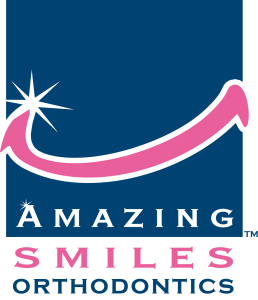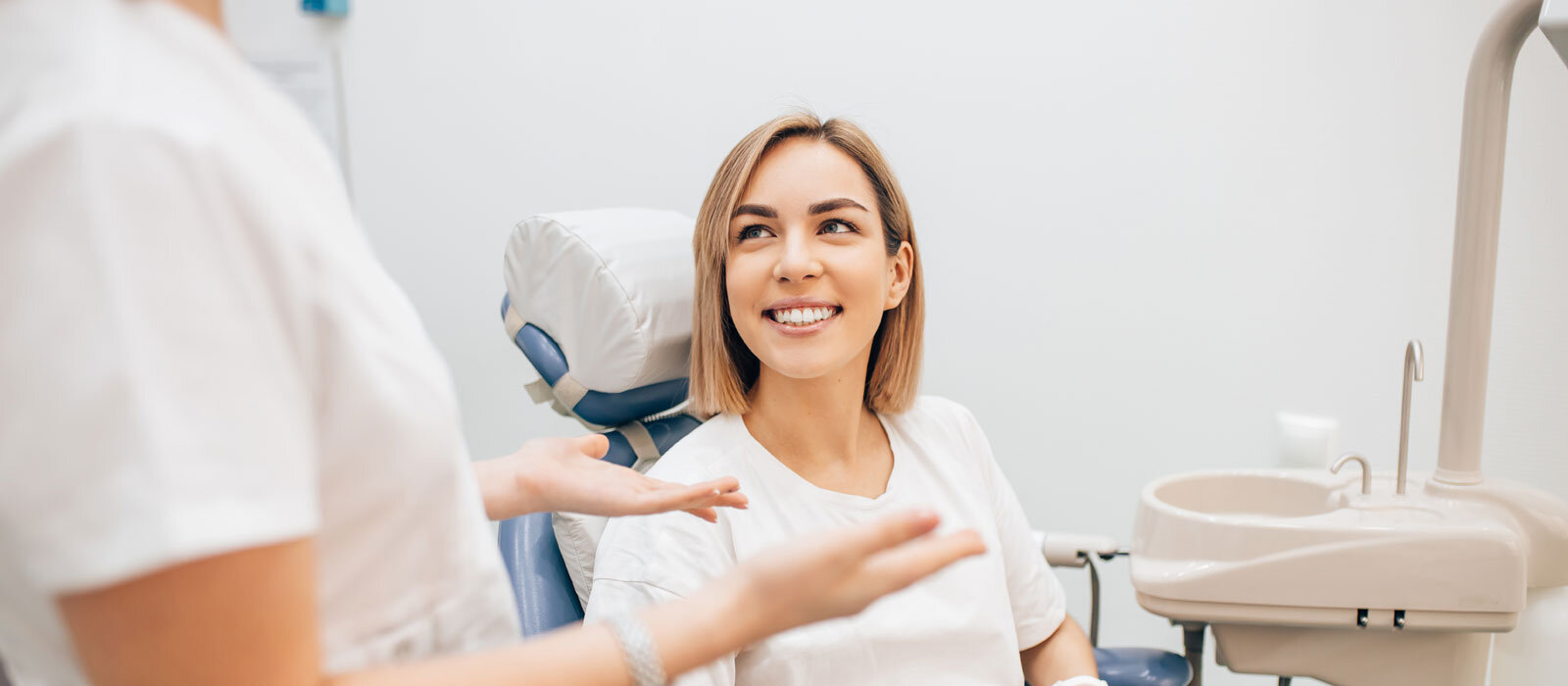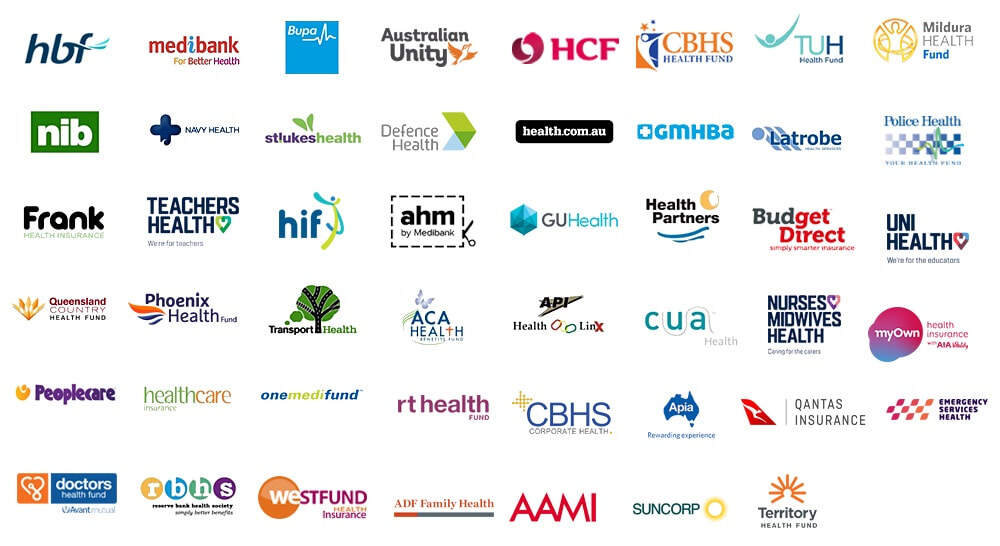
Invisible Internal Lingual Braces
Internal lingual braces, also known as incognito braces, are an orthodontic treatment that uses custom-made brackets and wires attached to the back surface of the teeth, making them virtually invisible from the outside. Unlike traditional braces, which are attached to the front surface of the teeth, lingual braces are hidden from view and provide a discreet alternative for those self-conscious about their braces’ appearance.
Lingual braces are custom-made for each patient, using advanced computer technology and 3D imaging to create a precise fit for the patient’s teeth. The brackets and wires are attached to the teeth with dental cement, and the wires are adjusted periodically to gradually move the teeth into their desired position. Since lingual braces require more extensive preparation and maintenance time by dentists, they cost considerably more than traditional braces and clear aligners.
Lingual braces are strictly determined by case eligibility, determined by a dentist. Dentists tend to recommend traditional or clear aligners for cost-conscious patients.
Lingual braces treat many orthodontic problems, including crowding, gaps, and bite issues. However, they may not be suitable for all patients, as they can be more difficult to clean and may cause some initial discomfort or speech difficulties.
Lingual braces require careful maintenance and frequent follow-up appointments with the orthodontist to ensure the treatment progresses as planned. Patients may need to modify their diet and oral hygiene routine to avoid damaging the braces or to keep them clean.
Lingual braces are typically prescribed and monitored by a professional dentist who has received specialized training in orthodontics and is experienced in providing this type of treatment. The length of treatment can vary depending on the individual needs of the patient but typically takes between 18-36 months.

The average duration for Internal Lingual Braces 12-36 months
Procedure for getting Internal Lingual Braces
If you’re considering lingual braces, here are some things you can expect during the treatment process:
Initial Orthodontic Consultation
Customization
Placement
Adjustment
Oral hygiene
Diet
Treatment duration
While lingual braces can require more customization and adjustment than traditional braces, they are a highly effective orthodontic treatment that can provide excellent results with minimal visibility. Your dentist will work closely with you throughout the treatment process to ensure your comfort and satisfaction with the results.
What's best for me?
In addition, traditional braces are easier to adjust and maintain than lingual braces, typically associated with fewer complications or issues. They are also less likely to interfere with speech or cause irritation to the tongue.
However, there has been an increasing interest in lingual braces in recent years due to their cosmetic appeal, as they are virtually invisible when smiling and talking. Lingual braces may be a good option for patients self-conscious about their appearance during treatment or require a high level of aesthetic appeal in their professional or personal lives.
Ultimately, the choice between traditional and lingual braces will depend on the individual’s orthodontic needs, personal preferences, and lifestyle factors. A consultation with an experienced local dentist can help determine the best treatment option for each case.
Benefits of lingual braces
- Aesthetics: Lingual braces are virtually invisible from the front of the mouth, making them an ideal option for patients self-conscious about wearing braces.
- Customization: Lingual braces are custom-made to fit the unique contours of each patient’s teeth, resulting in a more precise and effective treatment.
- Comfort: Since lingual braces are attached to the back of the teeth, they can be more comfortable than traditional braces, which can sometimes irritate the cheeks and lips.
- No interference with speech: Lingual braces are placed behind the teeth, making them less likely to interfere with speech than traditional braces.
- Suitable for complex cases: Lingual braces can effectively treat a wide range of orthodontic issues, including complex cases that may not be suitable for clear aligners or other types of braces.
- Minimal disruption to daily life: Unlike clear aligners, which must be removed for eating and drinking, lingual braces can remain in place throughout the day and do not require any special maintenance or cleaning routines.
While lingual braces may not be the right choice for everyone, they can benefit patients seeking discreet and effective orthodontic treatment. Discussing your options with our experienced dentists is important to determine the best treatment plan for your needs and smile goals.
Internal lingual braces are an orthodontic treatment where the brackets and wires are placed on the back (lingual) side of the teeth, making them less visible from the front. As with any orthodontic treatment, there are pros and cons to consider when deciding whether or not to get internal lingual braces.
Pros:
- Aesthetics: Internal lingual braces are virtually invisible from the front, making them a great option for people who want to straighten their teeth without the visible appearance of traditional braces.
- Comfort: Because the brackets and wires are placed on the back of the teeth, there is less irritation to the lips and cheeks than traditional braces.
- Effectiveness: Internal lingual braces can be as effective as traditional braces in correcting many orthodontic issues.
- Customization: Each set of internal lingual braces is custom-made for each patient, which can lead to a more precise and personalized treatment.
Cons:
- Cost: Internal lingual braces are more expensive than traditional braces due to the additional customization required.
- Difficulty with cleaning: Because the brackets and wires are on the back of the teeth, cleaning around them can be more difficult, increasing the risk of tooth decay and gum disease if proper oral hygiene is not maintained.
- Speech difficulties: Some people may experience difficulty speaking at first because the brackets and wires can affect tongue placement and movement.
- Adjustment period: It may take some time to adjust to the feeling of having the brackets and wires on the back of the teeth, and some people may experience discomfort or soreness during the first few weeks of treatment.
Ultimately, getting internal lingual braces will depend on your preferences, orthodontic needs, and budget. Discussing your options with an orthodontist is important to determine which type of treatment is best for you.
Not everyone is eligible for lingual braces. Lingual braces require enough space between the teeth and the tongue to accommodate the brackets and wires. Additionally, certain orthodontic issues may not be able to be treated with lingual braces.
Lingual braces may not be recommended for people with small teeth, deep overbites, severe crowding, or strong tongue posture that could interfere with the braces.
Furthermore, people who have difficulty maintaining good oral hygiene may not be good candidates for lingual braces, as cleaning around the brackets and wires on the back of the teeth can be more difficult.
The best way to determine if lingual braces are right for you is to consult an experienced orthodontic dentist. They can evaluate your case and provide personalized recommendations based on your needs and goals.
Lingual braces tend to cost more than traditional braces for several reasons:
- Customization: Lingual braces are custom-made for each patient to fit their teeth’ unique shape and achieve optimal treatment results. This customization requires additional time, effort, and expertise from the orthodontist, which increases the cost of the treatment.
- Specialized training: Not all orthodontists or orthodontic dentists are trained to provide lingual braces, so those who offer this treatment have typically undergone additional training and certification, which can increase the cost of the treatment.
- Materials: The brackets and wires used for lingual braces are typically made from higher-quality materials, such as gold or titanium, which can be more expensive than the materials used for traditional braces.
- Time and complexity of treatment: Lingual braces can take longer to place and adjust than traditional braces due to the additional customization required. This means more appointments and time spent on the treatment, which can increase the cost.
Overall, the lingual braces cost reflects the additional time, expertise, and materials required to provide this specialized treatment. However, it’s important to note that the cost can vary depending on the individual case and the dentist providing the treatment. Getting a detailed quote and discussing your options with your orthodontist is always a good idea before deciding on a treatment plan.
Lingual and traditional braces can cause discomfort or soreness during the initial adjustment period. However, whether lingual braces hurt more than traditional braces is subjective and can vary from person to person.
Some people may find lingual braces more uncomfortable or cause more soreness initially because the brackets and wires are on the back of the teeth and can interfere with the tongue, leading to more irritation or soreness. However, others may find traditional braces more uncomfortable because the brackets and wires are on the front of the teeth and can cause more irritation to the lips and cheeks.
It’s important to note that any discomfort or soreness associated with either type of braces is typically temporary and should subside within a few days to a week after each adjustment. Over-the-counter pain relievers such as acetaminophen or ibuprofen can alleviate any discomfort.
It’s also important to maintain good oral hygiene and follow the orthodontist’s instructions for care and maintenance of the braces to minimize any discomfort or complications associated with the treatment.
There is a slightly increased risk of tooth decay with lingual braces compared to traditional braces, but this risk can be minimized with good oral hygiene practices.
Lingual braces can make cleaning the teeth and gums more difficult, as the brackets and wires are on the back of the teeth, creating more nooks and crannies for food particles and plaque to accumulate. If proper oral hygiene practices are not followed, this can lead to an increased risk of tooth decay, gum disease, and other dental problems.
To minimize the risk of tooth decay with lingual braces, it’s important to:
- Brush and floss regularly: It’s important to brush twice daily and floss daily, using special floss threaders to clean around the brackets and wires.
- Use fluoride toothpaste: Fluoride can help strengthen the teeth and prevent tooth decay.
- Avoid sugary and acidic foods and drinks: These can increase the risk of tooth decay and damage the braces.
- Visit the dentist regularly: Regular dental checkups and cleanings can help detect and prevent dental problems before they become more serious.
By following these practices, you can minimize the risk of tooth decay with lingual braces and maintain good oral health throughout your orthodontic treatment.
Yes, lingual braces and lingual wire are different things.
Lingual braces refer to orthodontic braces that are attached to the back surfaces of the teeth, facing the tongue. They are designed to be discreet, as they are not visible from the front of the mouth. Lingual braces consist of custom-made brackets and wires that are tailored to fit the contours of the back of the teeth.
Lingual wire, on the other hand, is a thin metal wire that is placed behind the teeth to help retain their position after orthodontic treatment. The lingual wire is not used to move teeth like braces, but rather to hold them in place after they have been moved by braces or clear aligners.
The lingual wire is sometimes used in conjunction with lingual braces, as it can help stabilize the teeth and prevent them from shifting back to their original position after treatment. However, the lingual wire can also be used as a standalone retainer.
In summary, lingual braces are an orthodontic treatment that involves attaching custom-made braces to the back of the teeth, while lingual wire is a thin metal wire that is placed behind the teeth to help retain their position after orthodontic treatment.
Whether or not private health insurance will cover the cost of lingual braces will depend on the specifics of your insurance plan. Some plans may cover the cost of orthodontic treatment, while others may not. It’s vital to check with your private health insurance provider since some “Extras” cover include orthodontics, while others require an additional level of “Extras”.
You must check with your insurance provider to determine what your plan covers. Contact your insurer and ask specifically whether lingual braces are covered, and if so, what portion of the cost will be covered.
It’s important to note that even if your insurance covers lingual braces, you may still be responsible for out-of-pocket costs. You should also check if your insurance has any restrictions or requirements regarding the braces’ provider and the treatment length.
While undergoing orthodontic treatment with lingual braces, you must be mindful of the foods you eat. Here are some tips on what to eat and what to avoid:
Foods to avoid:
- Hard and crunchy foods: These can damage the brackets and wires of your lingual braces. Examples include hard candies, nuts, popcorn, and ice.
- Sticky and chewy foods: These can get stuck in your braces and are difficult to clean. Examples include caramel, chewing gum, taffy, and gummy candy.
- Tough meats: These require a lot of chewing and can be difficult to bite through. Examples include beef jerky and pork chops.
- Sugary foods and drinks: These can increase your risk of tooth decay and gum disease. Examples include soda, sports drinks, candy, and sweetened snacks.
Foods to eat:
- Soft foods: These are easier to bite and chew and less likely to damage your braces. Examples include cooked vegetables, pasta, rice, and soft fruits.
- Protein-rich foods: These are important for maintaining muscle and bone health during orthodontic treatment. Examples include fish, chicken, tofu, and beans.
- Dairy products: These are important for maintaining strong teeth and bones. Examples include milk, cheese, and yogurt.
- Water: Drinking plenty of water can help keep your mouth clean and healthy.
Following our dentist’s instructions on what foods to eat and avoid during treatment with lingual braces is important to ensure the best possible outcome. If you are unsure whether a particular food is safe, ask our family-friendly dental team for guidance.
The cost of Incognito braces (lingual braces) can vary depending on several factors. Here are some factors that can affect the cost of Incognito braces:
- The complexity of misalignment: The severity of the orthodontic problem being treated can affect the cost of Incognito braces. More complex cases may require longer treatment times, increasing the cost.
- Materials used: The cost of Incognito braces can vary depending on the materials used. Higher quality materials may cost more.
- Duration of orthodontic treatment: The length of treatment can also affect the cost of Incognito braces. Longer treatment times may require more appointments and adjustments, increasing the cost.
It’s important to discuss the cost of Incognito braces with your orthodontist before starting treatment. Our dentists can provide you with an estimate of the cost based on your individual needs and treatment plan. They may also offer financing options to help make treatment more affordable. Our dentist may recommend traditional braces or clear aligners as a cost alternative for your needs.
We accept all major health funds

Make an Enquiry
At Amazing Smiles, we are at the forefront of orthodontics, utilizing modern techniques and technology to provide exceptional results. Our revolutionary orthodontic services are primarily available at our family-friendly Gold Coast, Logan, Jimboomba, and Bray Park clinics. Completing this form takes the first step towards achieving the smile you've always dreamed of.

